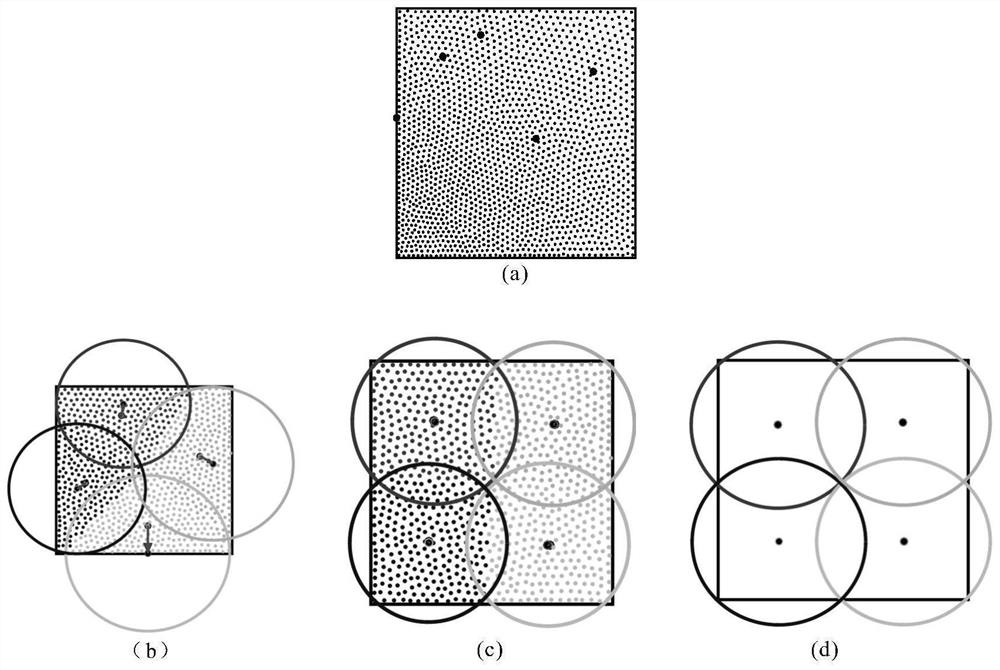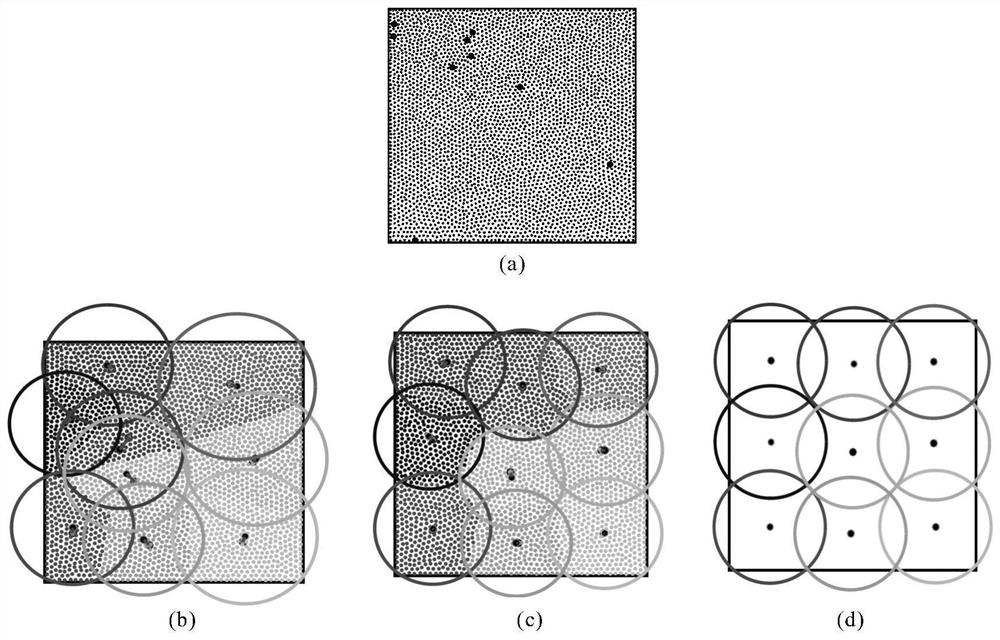A Coverage Optimization Method for Automatic Weather Stations
An automatic weather station and coverage optimization technology, applied in the field of optimization, can solve problems such as no high coverage rate, achieve reasonable node deployment and regional division, reduce complexity and computational complexity, and improve the ability to monitor meteorological information.
- Summary
- Abstract
- Description
- Claims
- Application Information
AI Technical Summary
Problems solved by technology
Method used
Image
Examples
Embodiment 1
[0051] The automatic weather station coverage optimization method in the present embodiment comprises the following steps:
[0052] Step 1. Modeling: randomly deploy N automatic weather stations in a two-dimensional rectangular plane T of size L*W, and mark the N automatic weather stations as: s 1 ,s 2 ,...s i ,...s N ;
[0053] Among them, s 1 is the label of the first automatic weather station, s 1 in T at position c 1 ;s 2 is the label of the second automatic weather station, s 2 in T at position c 2 ;s i is the label of the i-th automatic weather station, s i in T at position c i ; i=1, 2, . . . N; s N is the label of the Nth automatic weather station, s N in T at position c N ;
[0054] Step 2, construct the Voronoi diagram of each automatic weather station, obtain the Voronoi region of each automatic weather station;
[0055] Among them, there are two methods for calculating the Voronoi diagram of each automatic weather station in step 2:
[0056] (1), t...
Embodiment 2
[0086] Different from Embodiment 1, the specific steps in step 3 in this embodiment are:
[0087] Step 3-a, calculate the centroid corresponding to the Voronoi area of each automatic weather station And update the centroid corresponding to the Voronoi region of each automatic weather station to the current position of each automatic weather station;
[0088] The centroids corresponding to the Voronoi regions of each of the above automatic weather stations are calculated using existing algorithms;
[0089] in, For the first automatic weather station s 1 The centroid corresponding to the Voronoi region of ; For the second automatic weather station s 2 The centroid corresponding to the Voronoi region of ; is the Nth automatic weather station s N The centroid corresponding to the Voronoi region of ;
[0090] Step 3-b, judgment If yes, go to step 3-c; if not, go to step 3-f;
[0091] Among them, ε is the preset threshold;
[0092] Step 3-c, in the same way as in ste...
PUM
 Login to View More
Login to View More Abstract
Description
Claims
Application Information
 Login to View More
Login to View More - R&D
- Intellectual Property
- Life Sciences
- Materials
- Tech Scout
- Unparalleled Data Quality
- Higher Quality Content
- 60% Fewer Hallucinations
Browse by: Latest US Patents, China's latest patents, Technical Efficacy Thesaurus, Application Domain, Technology Topic, Popular Technical Reports.
© 2025 PatSnap. All rights reserved.Legal|Privacy policy|Modern Slavery Act Transparency Statement|Sitemap|About US| Contact US: help@patsnap.com



